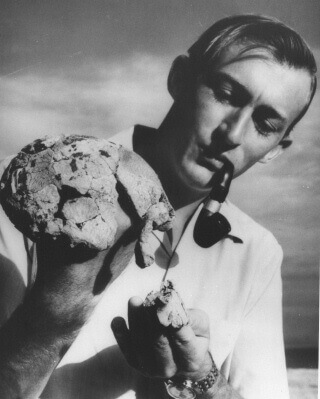
One of the world’s most well-known paleoanthropologists and conservationists, Richard Leakey made significant contributions not only to his fields of study but also to politics and research in Kenya.
1. Born in Nairobi, Kenya
Richard Leakey was born in Nairobi, Kenya a few days before Christmas in 1944. His father, Louis Leakey, was a curator at the Croyndon Museum and his mother, Mary, was the Director of Excavations at Olduvai. Both of his parents were archaeologists and were very important and influential in the community where they lived.
2. Love of Horseback Riding
Richard and his brothers were all involved with horse jumping and the steeplechase competitions. Leakey and his brothers, Jonathan and Phillip, were members of the Pony Club and loved horseback riding. They liked to ride on horseback and would often spend time riding across the plains to the Ngong Hills looking for animals. When Richard was 11, he fell off his horse and fractured his skull. Though the injury was so traumatic that he almost died, he did eventually recover.
3. Growing Up With Pets
Pets were very important at the Leakey house in Richard’s childhood. His parents started the Dalmatian Club of East Africa and won a prize in 1957 for their contributions to the animal society. Dogs were only one of the many different animals which could be found at the Leakey home.
4. Denied a Formal Education
Richard’s schooling got off to a difficult start. While he was attending the Duke of York Secondary School, he made some political comments about racial equality that got him locked up in a cage by the other students who then spit on him and abused him. Richard was basically denied a formal education and he often skipped class and worked on a business he had started selling animals to be photographed. At age 16 he quit school and his parents gave him the option of returning to school or supporting himself, which he eventually chose to do.
5. Entrepreneur
As a teenager, Richard Leakey decided to go into business for himself and got into the trapping and skeleton supply business. He was already skilled in many different areas including horseback riding, mechanics and archaeology. He learned to identify bones and his combined skill set pointed him in a direction that he didn’t necessarily want to go because his father was an archaeologist.
6. Lake Natron
Lake Natron became one of Richard’s first significant archaeological sites; he also met his future wife, Margaret Cropper there while on a second expedition in 1964. When Margaret decided to go back to England, Richard went too. He studied, got his degree and got to know Margaret better. They were married in 1965 and returned to Kenya.
7. Discovery of Homo Sapiens
Richard didn’t agree with his father, Louis, very often and Louis sent Richard on an expedition to the Omo River. There were a few other parties there including French and American archaeologists. While the Kenyan contingency, led by Richard, was crossing the river, their boat was practically destroyed by a crocodile attack and they barely escaped with their lives. While they were on site, they discovered a fossil which turned out to be Homo sapiens. It was the oldest of the species that had been found at the time and was estimated to be 160,000 years old.
8. National Geographic Society
The National Geographic Society became involved with the expeditions that Richard was on and they often supplied him with money and financed his digs. He received $25,000 to work on the Koobi Fora site. As he felt he was being undermined by other college graduates at other digs and wanted to be in control at his own dig, he only hired graduate students to help him and Margaret.
9. Dig in West Turkana
West Turkana was an especially significant site for Richard and his team. There, he discovered an almost complete skeleton of a 12 year old Homo erectus who died approximately 1.6 million years earlier and named the find Turkana Boy.
10. The Safina Party
Richard became more heavily involved with politics in 1995 as he joined a group of Kenyans who launched the Safina Party. The party was only approved to become an official political party in 1997.

Leave a Reply